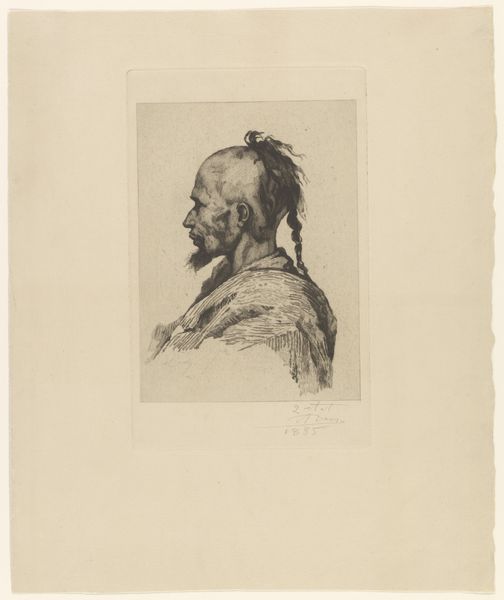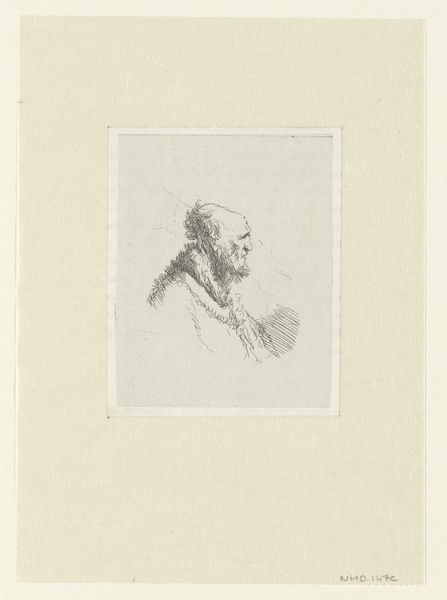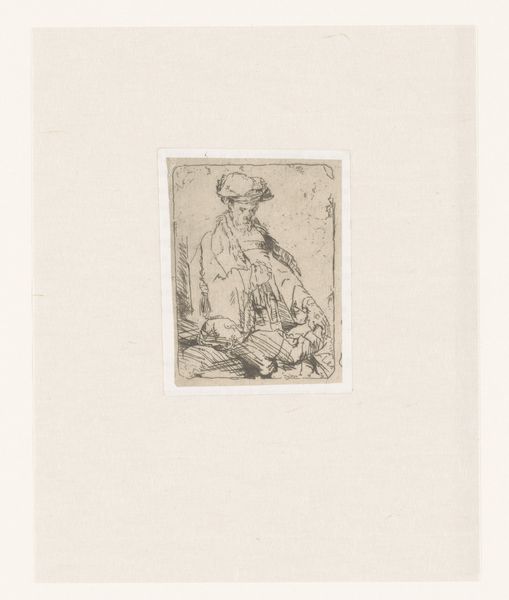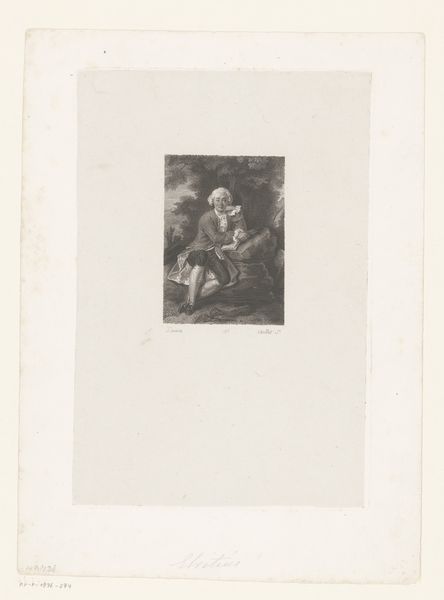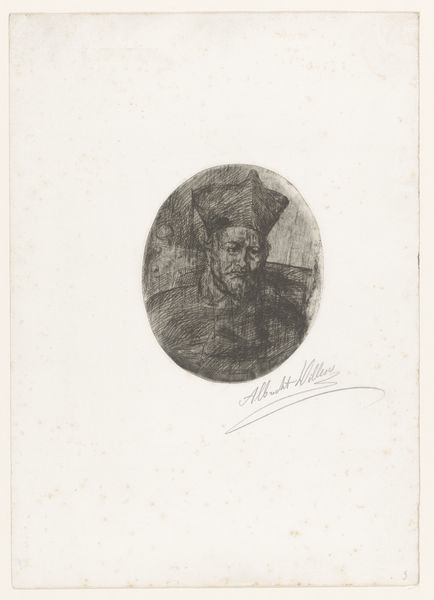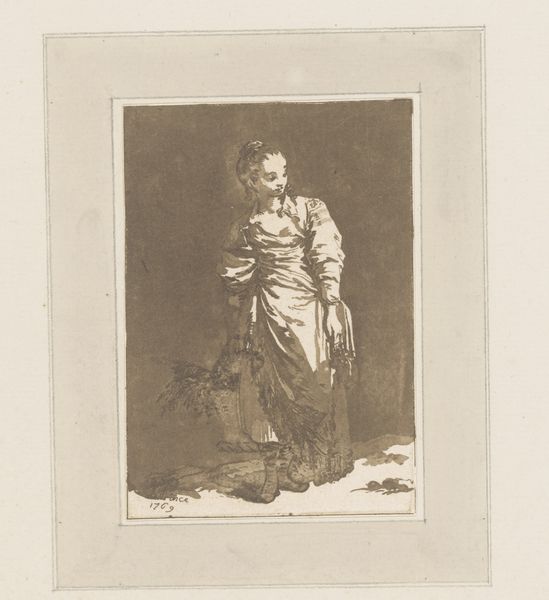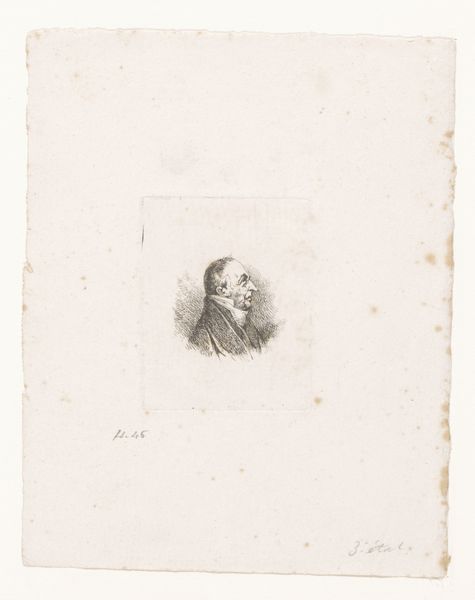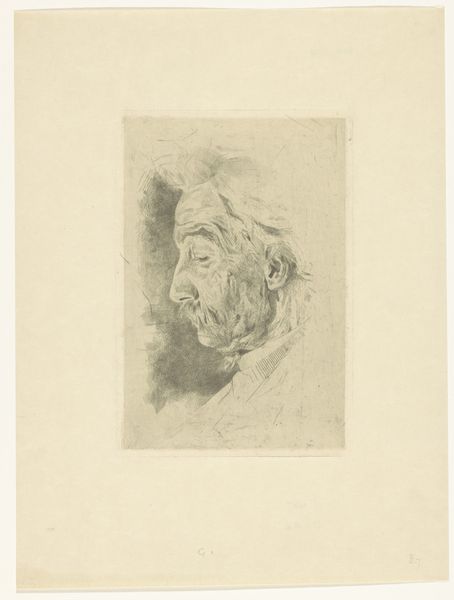
drawing, paper, pencil
#
portrait
#
pencil drawn
#
drawing
#
pencil sketch
#
paper
#
pencil drawing
#
pencil
#
genre-painting
#
academic-art
#
realism
Dimensions: height 164 mm, width 98 mm
Copyright: Rijks Museum: Open Domain
Curator: Immediately, the soft lines of the pencil give it such a pensive mood. Almost melancholic, don't you think? Editor: Yes, there's a certain gravitas to it. We're looking at Léon Brunin's "Portrait of an Unknown Bearded Man," created in 1882. A striking work executed in pencil on paper, emblematic of its time. But beyond mere representation, what statements, social commentaries, or period archetypes could it embody? Curator: The beard immediately makes me think of patriarchal authority, even wisdom—visual cues cultivated throughout history. Note the detail, especially in the rendering of the beard, suggesting a deliberate construction of identity. What meanings can be mined from that display of facial hair? Editor: It's a symbol loaded with meaning, no doubt, and how does the medium – the simple pencil – influence our interpretation? Pencil drawings at the time suggested intimacy, preliminary work. Does it humanize him in contrast to more "formal" portraiture? Or could it democratize portraiture to make this "unknown man" into a symbol of working men, philosophers and bohemians of his time? Curator: Intriguing. What do we make of the setting, or lack thereof? There's just the corner of what looks like a doorway or the hint of a wall. Does that minimal background erase aspects of his identity or provide an implicit commentary on limited mobility and societal limitations based on factors like gender or class during that era? Editor: The composition, the stark realism in the face – yet softened by the medium of pencil, creates a compelling study of masculinity, of that man's possible struggles. His downward gaze hints that whatever his social and gender positioning, that period created real existential pressures. It encourages our empathetic gaze. Curator: Precisely, making the image surprisingly resonant with contemporary discourse about gender and identity. Editor: Well, the beauty and skill of Léon Brunin invites the viewer to engage with visual symbols and deeper histories of representation. It really is the key to unlocking historical perspectives and cultural norms. Curator: Absolutely, I agree; Brunin's thoughtful work encourages us to examine not just what's visible, but also the complex societal frameworks that shape our understanding of ourselves and each other, which are crucial in comprehending intersectional narratives that address our identities today.
Comments
No comments
Be the first to comment and join the conversation on the ultimate creative platform.


